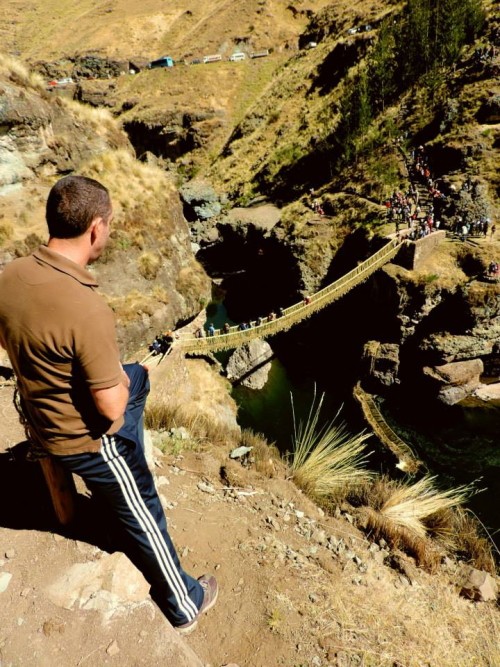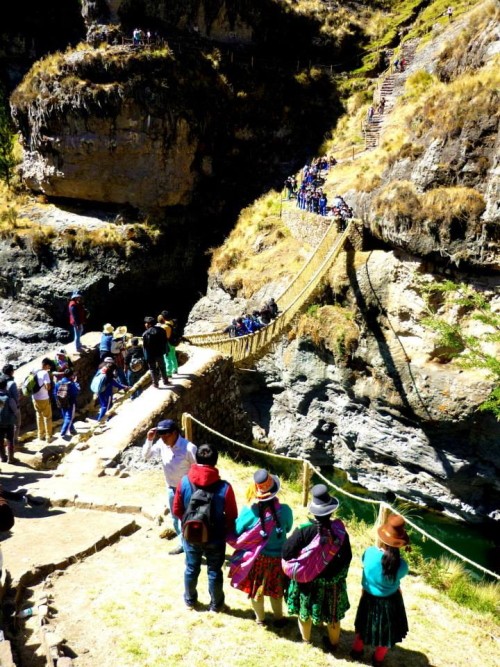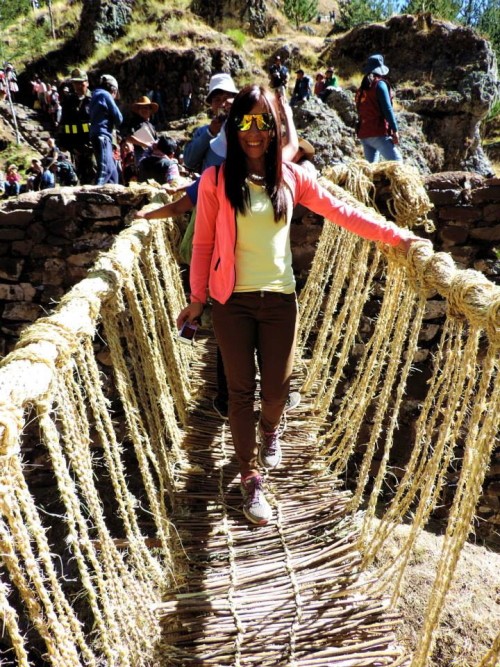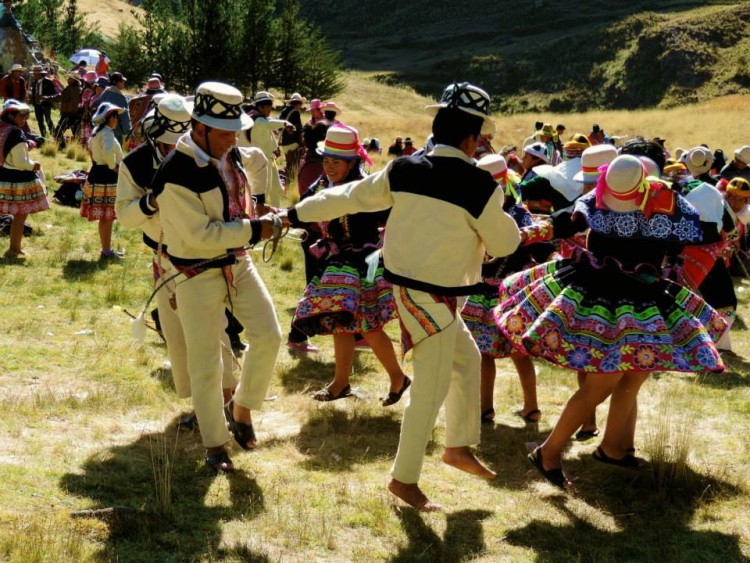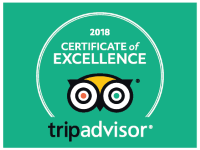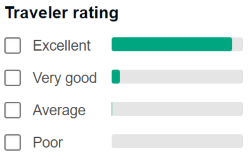This is the first time I had seen the annual Qeswachaka Inca Rope Bridge festivities with my own eyes, so I thought I would blog something and add some photos to our Facebook page for you to enjoy. This rope bridge stretches 35 meters across the Apurimac river in the remote Canas region, some 160 km from Cusco. It is made entirely from grass and is strong enough for several people to cross at once. As you can see, thankfully we got across without it breaking, but it does twist and sway about quite a bit, which is a little unnerving, and not for vertigo sufferers I would suggest!
The word Q’eswachaka is formed from two Quechua words: Q’eswa meaning “to braid” and Chaka meaning “bridge”. This bridge is built in a traditional Inca way from a local tough grass called q’oya, and involves around 700 local people weaving over 35 kilometers of said grass. The materials have never changed and the construction techniques have been passed down from generation to generation since the first bridge was built in the 15th century.
Malka and I visited on the final day (the second Sunday in June), when people are first allowed to cross the new bridge. Hundreds of people are celebrating with dancing, drunken speeches, diabolical music and weird singing, and plenty of eating and drinking (especially drinking!). As you can see from the photo, it is a real spectacle and an assault on all the senses.
Next year, the plan is to go on the first of the four days to see the bridge being built from scratch … and see the old one discarded. As you can see, they throw the old one into the river and as it is just grass, it degrades naturally. It is not easy to witness such authentic festivals when you travel, even here in Peru where people cling to their traditions much more than in many other parts of the world. You have to put in the effort and travel deep into the countryside, but the rewards are amazing. My wife is from Cusco and even she was very excited to be in the midst of such a traditional spectacle.
Facebook album for the Qeswachanka rope bridge
The three and a half-hour drive to Qeswachaka is also a real experience. Very soon after leaving Cusco on the main road to Puno, the more commercial side of Peru evaporates and it feels like a step back in time. I have lived here for over 15 years but still get a kick out of the rich cultural heritage of this region.
As it was Sunday, a market day, many local people were dressed in their traditional clothes and were herding animals along the roadside, or in vehicles. In Combapata – where you make the turn to head up into the mountains – we literally had to drive through a cattle and pig market, as the main road was closed with market stalls! The route over the top of the highland area is breathtaking: wonderful vistas, lakes, mountains, and small remote villages. We got lost and stopped to ask for directions. The first two people we spoke to didn’t speak Spanish – only Quechua, the ancient Inca language!
If you are planning to come to Peru, there are many such festivals you can attend. So if you have a particular interest in such events, let us know early as they take some planning. But as you can see, they are well worth the effort.

